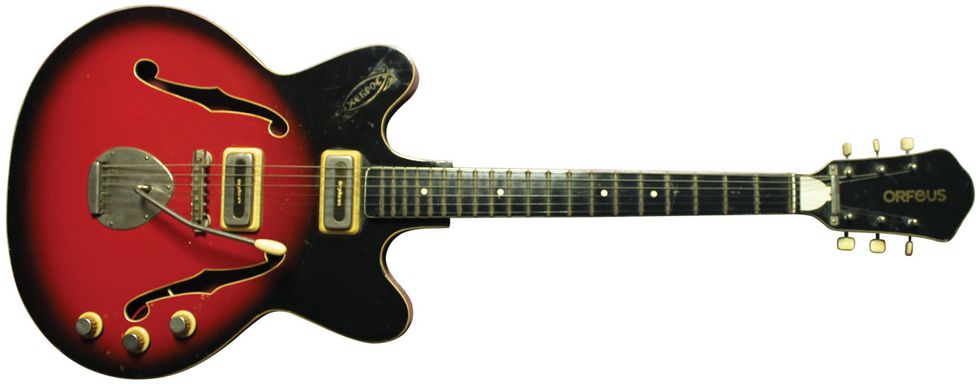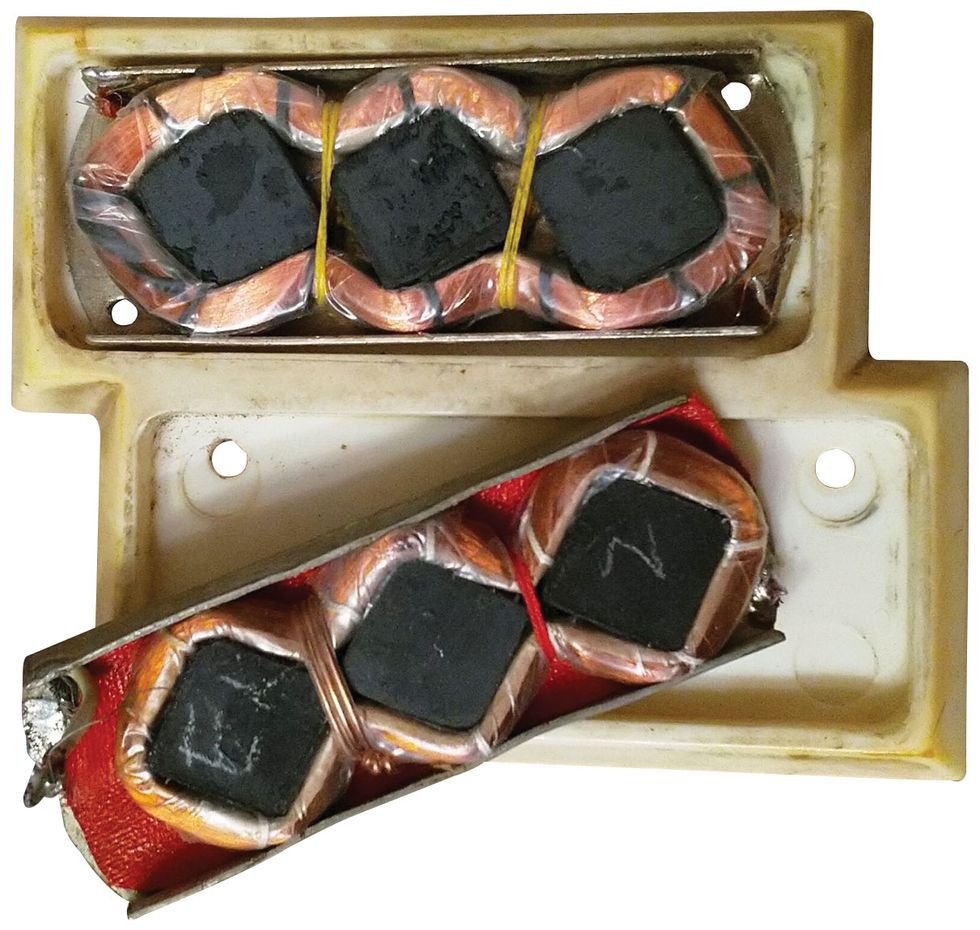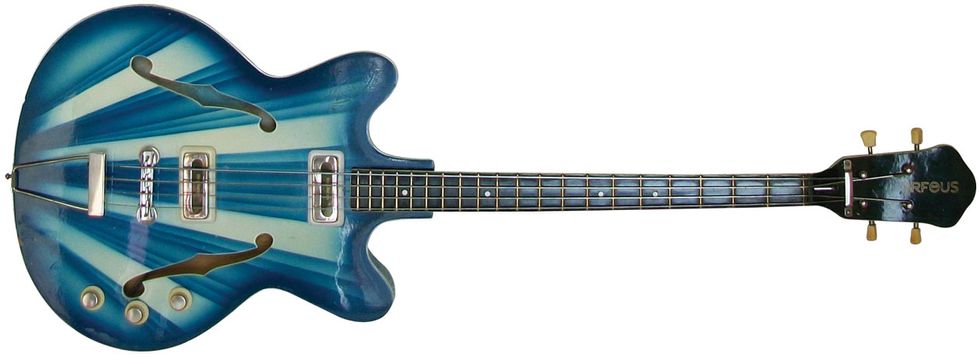When researching guitars, I often discover amazing things. Sometimes I learn about tireless factory workers or innovative designers ... or even yogurt! Yeah, that’s right, this month I learned that Bulgaria is home to some of the best-known yogurt in the world. Bulgarians often attribute their good health to their yogurt, which has some sort of bacteria that’s only known to exist in the country. I could go on and on with Bulgarian facts, but instead I’ll riff about the “state” guitars produced there during the Communist era.
Sometime during the late ’60s, many then-Communist countries started to produce electric guitars—instruments for the “people.” One of the brands to emerge from Bulgaria was Orfeus, which was called Orpheus for export. These guitars were made in the town of Plovdiv at a furniture factory, which explains why the wood quality and finishes are rather decent. Take, for example, the 335-style Hebros model in Photo 1. At the time, Western instruments were almost impossible to find in Bulgaria, and this Hebros electric looks like it was copied from a Gibson photo. The top and back are completely flat and feature some sort of local Balkan ply, which is also used for a core running down the center.
Photo 2 by Linas Pečiūra
Because the builders probably didn’t have much experience designing guitars, playing this Hebros is quite a ride. For starters, it has a chunky neck with an extreme fretboard radius. The tuners are okay, but the tremolo feels like you’re working some old piece of farm equipment. All indications point to an early-’70s production date for this Bulgarian oddball.
The pickups are super funky—both sonically and in their design. When I first heard them, they sounded thin, but after I checked out all the cold solder joints and pots (which appear to have come straight out of a vintage radio), I was able to improve the tone a bit. The pickups definitely have a mellow, vintage sound that lacks attack and sustain, but could conceivably work well in the right musical context.
Photo 3 by Linas Pečiūra
But if you take apart an Orpheus pickup ... OMG! With candy-like magnets nestled in cloth-covered copper windings (Photo 2), you could be staring at a little package of premium chocolates. Definitely the most adorable pickups I’ve ever seen.
Also available in bass and 12-string versions, Orpheus guitars featured a variety of pickup combinations and some really wild finishes (Photo 3). Apparently, these were the most basic offerings from Orpheus, and thus the most common on the used market. Orpheus guitars, as well as others made in Bulgaria, fascinate me because so little is known about who built them. If you feel like exploring a surreal path, search out vintage Bulgarian guitars for design inspiration—some of the later models were really gonzo.
A huge shout out to Linas Pečiūra for his fine photos.
Watch the video demo:













![Rig Rundown: Russian Circles’ Mike Sullivan [2025]](https://www.premierguitar.com/media-library/youtube.jpg?id=62303631&width=1245&height=700&quality=70&coordinates=0%2C0%2C0%2C0)







